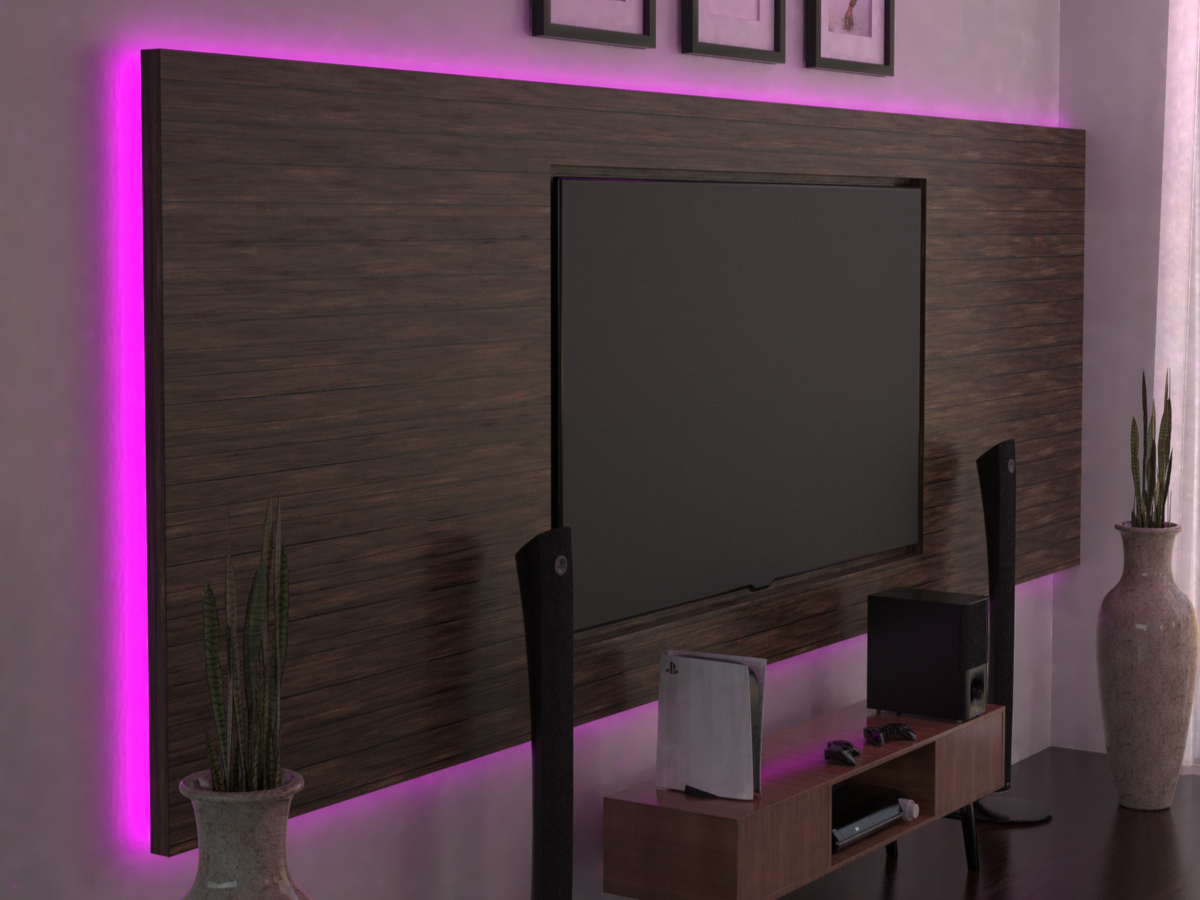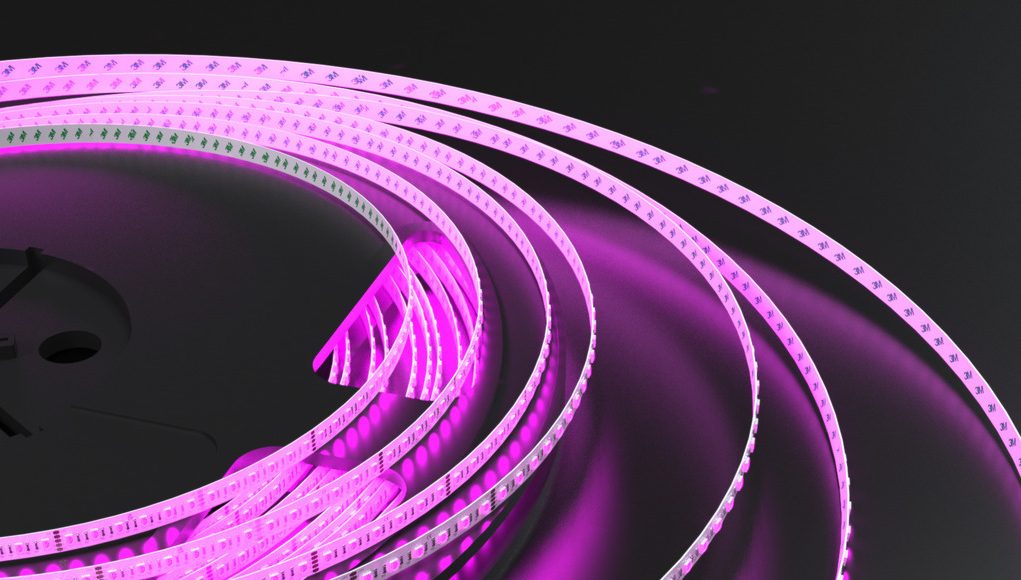LED tape lights are a dream. They’re brilliant for under cabinets, backlighting TVs, or jazzing up your gaming setup. But what if you end up buying the wrong ones and making your room like a hospital corridor?
Choosing the right LED light strips isn’t just about clicking the cheapest option on Amazon. It’s easy to make simple mistakes that leave you frustrated, out of pocket, or just plain annoyed.
Whether you’re a DIY pro or someone who once put up a shelf (badly), this guide’s for you. Let’s run through five common traps people fall into—and how to dodge them like a lighting ninja.
Mistake # 1: Ignoring Brightness and Colour Temperature
Most people look at watts when checking brightness. But that’s old-school thinking! Lumens is actually the one that tells you how bright a light is. So better check that instead of wattage. Otherwise, expect disappointment and dim corners.
For ambient lighting, around 300 lumens per metre is fine. But if you need task lighting, go brighter (think 800 lumens or more). Any dimmer and you’ll strain your eyes. But too bright and it’s like sunbathing indoors. Don’t let bad lighting ruin your vibe.
Now colour temperature. Warm white (2700K to 3000K) feels cosy. Natural white (4000K to 5000K) is crisp and clean. Cool white (6000K or higher) is just rude. It’s like being questioned under a spotlight. Unless you’re doing surgery at home, you should probably avoid that one.
Additionally, don’t mix different colour temperatures in the same room. That’s just a lighting identity crisis waiting to happen. One bit warm and another bit cold will make your space confusing and cheap-looking. Stick to one tone per space, or you’ll regret it every time the lights go on.
Don’t trust dodgy product photos—they lie. Check the Kelvin rating in the specs instead (it’s literally a number). Make your life easy and choose the right one the first time. Your eyes and guests will thank you.
Mistake # 2: Overlooking Compatibility with Power Supply
LED tape lights aren’t plug-and-play magic. They need the right power supply. Not “whatever’s lying in the junk drawer.” Using the wrong one can cause flickering, overheating—or absolutely nothing at all. That’s not fun for anyone.
Start by checking the tape kit’s voltage. Most strips are either 12V or 24V, and they’re not interchangeable. Using the wrong one is like pouring diesel into a petrol car. You’ll ruin it and then hate yourself a little.
Next, calculate the total wattage. Multiply watts per metre by the length of the strip. Add 20% headroom so you’re not running it at full blast 24/7. That’s how you keep things safe and steady.
Also, connectors matter—positive to positive and negative to negative. It’s not rocket science, but ignore them, and your lights won’t work. Or worse, they’ll work for two minutes and then never again.
The bottom line is don’t wing it. A decent driver that matches your LED lights is non-negotiable. Get it right, and the rest becomes easy. Get it wrong and… well, enjoy the sparks.

Mistake # 3: Not Checking IP Rating or Intended Use
Not all LED tape lights are made for steamy showers or wild British weather. That’s where the IP rating comes in. Ignore it, and your lights could short out faster than your patience during a flat-pack furniture build.
IP20 is fine for bedrooms or lounges. But for bathrooms, kitchens, or outdoors, you’ll want IP65 or higher. Otherwise, moisture will creep in and ruin everything, like an unwanted houseguest that never leaves.
“Waterproof” doesn’t mean it can survive a dunk in the bath. It just means a bit of splash resistance. If you want something submersible, then go for IP68. Anything less, and you’re asking for flickers, failures, and regrets.
Also, the tape’s adhesive backing is about as reliable in damp places as a budget airline. Use clips or proper mounting channels instead. Trust tape at your own risk.
Finally, read the spec sheet. Don’t just assume your strip can handle anything. It’s not a superhero. If it’s not rated for moisture, keep it dry or prepare for disappointment.
Mistake # 4: Skipping on Quality and Warranty
Cheap tape lights are tempting. So is takeaway every night. But both choices can come back to bite you. Low-cost strips usually mean weak brightness, dodgy colours, and a lifespan shorter than a goldfish’s attention span.
Check the CRI (Colour Rendering Index) and aim for 80 or higher. A low CRI will make everything look a bit off, as if your sofa is suddenly green instead of grey. That’s not a good vibe.
LED density matters, too. More chips per metre equals smoother, more even light. Fewer chips lead to patchy lighting that screams, “I bought this in a panic at 2am.”
Good brands offer solid warranties. A one-year minimum is fair. If there’s no warranty at all, then that’s a red flag the size of a bus. Back away slowly.
The point is, you should pay a bit more for quality. You’ll get better light, less hassle, and something that actually lasts. Unless you enjoy returning broken lights every few months.
Mistake # 5: Failing to Plan for Installation Needs
Most people get so excited when buying tape lights that they forget one small detail: how they’re actually going to install them. Spoiler: tape alone rarely cuts it.
You’ll need connectors, maybe extension leads, corner joints, or even a soldering iron (if you’re brave or foolish). Planning ahead saves you time, energy, and angry swearing later.
Measure everything twice. Strips can only be cut at marked points. Do it in the wrong place, and you’ll end up with two useless halves and one expensive mistake.
Cables need somewhere to go. Power supplies need space. Airflow helps stop overheating. Don’t just stick the strip on and hope for the best. That’s how things melt—or fall off the wall mid-movie.
Use aluminium channels for a clean, tidy finish. They help with heat, look smart, and keep everything secure. No drooping lights here, thanks very much.
And if it’s getting complicated? Call in a pro. There’s no shame in outsourcing. Better that than turning your LED dream into a DIY horror story.
Light Smart, Not Stupid
LED tape lights are brilliant—as long as you avoid the classic mistakes. Plan properly, buy quality, and don’t trust sketchy bargains.
Get the correct brightness, power supply, and IP rating. And think before you stick.
Want help choosing LED tape lights that actually work? Simple Lighting has top-notch LED solutions and people who know their stuff. No guesswork. No nonsense.
Buy smart. Light better. And visit our website if you need quality products.














